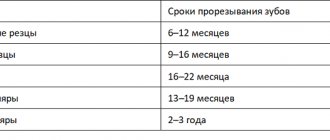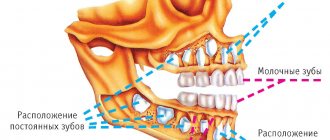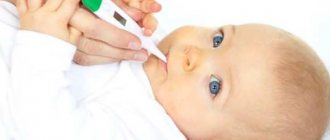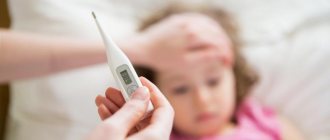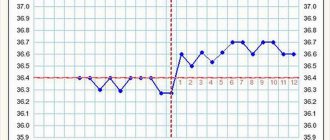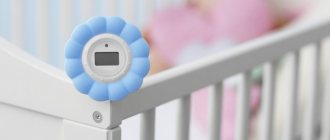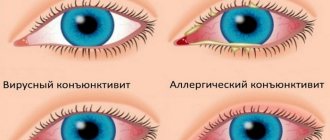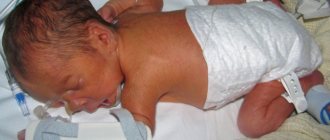Temperature during teething in children
The appearance of the first incisors and molars is a difficult time for a child. The baby whines and requires utmost attention, since teething in children is accompanied by malaise and fever , which usually lasts up to 3 days. To make your baby feel better and not confuse teething syndrome with another ailment, you should know the main symptoms, why and how high the temperature can rise, and when and how to bring it down.
How many days does it last
In answering this question, it should again be recalled that all children are different and react differently to the appearance of teeth. On average, fever in babies can last 1-3 days and usually disappears immediately after teething.
But in the experience of many pediatricians, there are children whose high body temperature associated with the appearance of their first teeth lasted up to 4-5 days. Or there are cases when the fever lasts only a few hours and goes away without any intervention. In any case, you should not delay consulting a doctor, since if you have any diseases, identifying them earlier has a more favorable outcome.
Read also: Teething with fever
Teething symptoms
Between 4 and 8 months of age, most children's baby teeth emerge. It happens that a baby is born with teeth. And sometimes this process begins after a year.
The famous pediatrician Komarovsky says that his little patients can experience completely different sensations during teething, among which common signs are identified:
- Saliva is actively secreted in large quantities, which flows onto the chin and neck. Thanks to its bactericidal and anti-inflammatory properties, the risk of infection with viruses is reduced. If you constantly wipe the baby, skin irritation will occur, so the saliva is only occasionally blotted with napkins.
- Decreased appetite. It happens that young patients flatly refuse to eat. In this case, breastfeeding helps, as it calms and relieves pain.
- Nervousness. For no good reason, the baby suddenly begins to whine and also, by itself, calms down. The period of teething can be accompanied by round-the-clock painful sensations, and the sleep and wakefulness patterns are disrupted.
- Loose stools. Large salivation leads to loose stools. Diarrhea is possible due to changes in the intestinal microflora and the activity of pathogenic bacteria due to a decrease in the body's defenses.
- Inflammation. Swelling of the gums is normal. A white stripe visible from the gum indicates that the tooth will soon come out.
- Runny nose. Swelling in the mouth can spread to the nasal mucosa, which causes a runny nose.
- Itchy gums. The child strives to test objects “to the teeth.” In this simple way he scratches his gums. Teethers, which are sold in abundance in stores, solve this issue.
- Temperature. During teething, there may be a high temperature - up to 39 ° C. It is necessary to monitor the child’s condition in order to bring down the fever if necessary.
The following video shows the order in which baby teeth erupt:
What to do if you have a high temperature
Body temperature can change not only when baby teeth erupt. Most often, it becomes critical when changing the milk “set” to a permanent one. In this case, the child cannot yet explain what is bothering him.
How to help your baby teething? Temperature can be either physiologically normal or a sign of a disease, such as gingivitis.
To figure out whether it is necessary to reduce the temperature caused by teething, it is necessary to determine the reason why it increased. If this happened for a natural reason, then there is practically nothing to help. Komarovsky says that it is impossible to reduce the temperature to 39 degrees. In the second case, the temperature does not affect the teeth in any way, and it can be eliminated by eliminating the disease that causes this negative symptom.
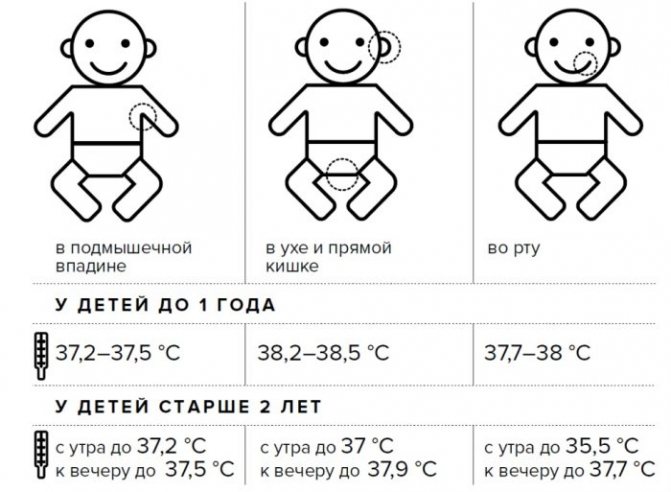
Often parents feverishly try to cure their child with serious antiviral and antibacterial drugs. Sometimes it comes to the point that parents heal babies in the first weeks of their life and create for them “an excellent foundation for the future” in the form of chronic diseases. Taking pain medication without consulting a doctor is a bad idea.
Read also: Teething of upper teeth in infants
Most parents do not know how many degrees Celsius should be the normal body temperature of a child who is cutting a full-fledged dental plate. Dr. Komarovsky said that a temperature of 37 °C or higher (up to 38 °C) is normal. In this way, the body resists unfavorable conditions and enhances the process of producing antibodies. That is why it is impossible to intervene radically.
But we also cannot ignore what is happening. When the fever has reached 38 °C or higher, and teeth are cutting very slowly, you need to visit a doctor who will prescribe a suitable antipyretic drug. It is especially important to do this if the temperature lasts for a long time.
How many days can a high temperature normally last? Experts convince that she should torment the child for no longer than 3 days. Otherwise, this indicates serious health problems. If there is a runny nose during teething, then this indicates that it is time to go to the doctor, who will tell you what to do in this or that case.
In the video, the pediatrician talks about how you can help your child with fever during teething:
Reasons for rising temperature
When teeth are cut, changes occur in the bodies of infants that provoke temperature:
- In the place where teeth come in, active substances are produced that are necessary to soften the gums and jaw bone.
- All the forces of the body are directed towards solving the “dental problem”. The immune system weakens, and infections that appear in the body at this time provoke fever.
- The body’s full defenses have not yet been formed. Due to poor appetite and lack of sleep, it loses strength, immune function declines, and a favorable environment arises for the development of harmful bacteria. To prevent their population from growing, the temperature rises.
Danger signs
Temperature during teething in babies is one of the body’s defense mechanisms, a manifestation of the wisdom of our body. However, it is important not to overlook the symptoms that signal ailments hidden behind teething syndrome:
- Stuffy nose. Colorless, odorless discharge is recognized as natural. Greenish-purulent snot and a very stuffy nose suggest the development of rhinitis.
- I have a stomachache. If diarrhea is accompanied by cutting pain in the abdomen, an intestinal infection is predicted. Gnawing on everything, the baby could bring it into his mouth.
- Painful cough. There is so much saliva that the child does not have time to swallow it. After choking on saliva, the baby coughs, this is normal. But mucus discharge and wheezing accompanying cough may be associated with respiratory problems.
- Redness of the throat. During the process of teething, swelling of the gums is not able to spread to the throat. If the palate and throat turn red, the baby may develop pharyngitis.
- Vomit. In children, the gag reflex can be triggered by heat. Vomiting also accompanies damage to the nervous system and poisoning. Therefore, you will need to call a doctor to rule out these ailments.
If the described signs are present in the baby at the moment when he is teething, medical care is required at any temperature.
Symptoms of teething
Any parent is aware that the appearance of tumors in the mouth (teeth) in children is usually not without unpleasant symptoms for him. As Dr. Komarovsky said, this is a purely individual process, which is accompanied by completely different sensations for each child. But we can identify the same symptoms for all babies: runny nose, fever, cough, loose stools, etc.
Read also: In what order does a child cut teeth?
Every parent can determine exactly where in the mouth and when the child’s teeth begin to cut. Increased salivation and anxiety with the constant crying of the child help with this.
Children's pediatrician, Dr. Komarovsky, classifies symptoms into obvious and hidden, which do not appear in everyone and not always:
The first category includes increased salivation. This discharge is especially abundant in babies at 3 months of age. Frequent wiping of saliva should be avoided at this time, as the baby’s delicate skin around the mouth begins to turn red, develop a rash, and peel off. To prevent the child from being completely wet from oral secretions, saliva should be blotted from time to time with disposable hypoallergenic wipes, minimizing contact with the skin. If your child is teething, then redness and slight swelling in the mouth are quite normal.
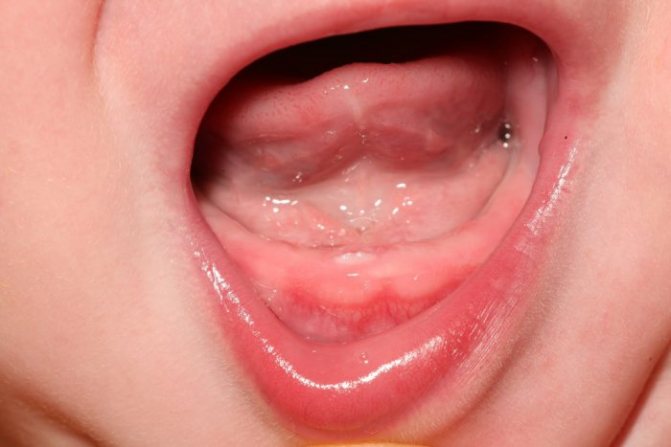
Teething in children does not always occur with a high fever. You should start to worry when your body temperature exceeds 38 °C. This symptom may indicate that there is an inflammatory process in the baby’s body.
They are not always associated with problems of the masticatory apparatus. Sometimes teething takes a long time, and then the process is accompanied by redness of the cheeks and buttocks. Diarrhea is also possible, but this is far from an obligatory symptom. As a rule, unregulated bowel movements are characteristic only until the first baby tooth appears.
Many parents ask experts whether teething can cause constipation, to which they receive mixed answers. This manifestation occurs much less frequently than diarrhea. Loose stools almost always torment a baby, but you should understand that this is normal.
In the video, Dr. Komarovsky talks about the temperature during the appearance of teeth:
When do molars start to grow?
In babies, their first teeth appear mainly from 5-6 months to 2-3 years. There are about 20 teeth in total. Milk teeth are not permanent, therefore, closer to 6-7 years, they periodically begin to fall out, and in their place new ones grow - permanent or molar. Molars in children are an even more important process than the eruption of baby teeth. It is not known when the first molars will begin to appear, since for each child this process is individual and depends not only on physiological characteristics, but also on factors such as diet, climatic conditions and the quality of drinking water. When teething molars in children, the temperature rises, but whether this is a normal property, we will find out further.
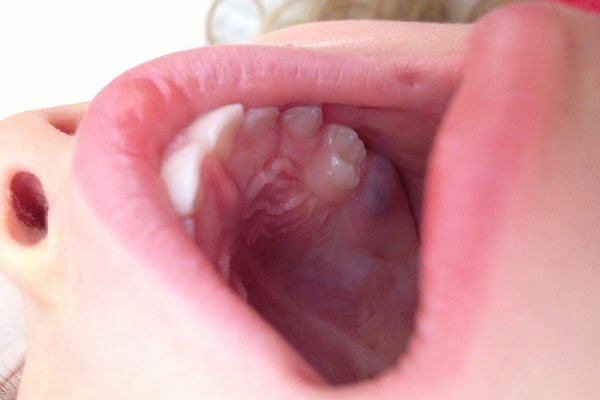
If the eruption of temporary teeth took place without significant health deviations, then this will not affect the molars in any way. It is worth noting that molars take much longer to erupt than baby teeth. For dairy animals this process usually takes 2-3 years, and for permanent ones from 6 to 15 years. Until the baby tooth falls out, a permanent tooth will begin to emerge in its place. Basically, for most children, the process of the appearance of molars is a process in which the baby experiences discomfort and pain.
It is important to know! The eruption of molars in a child may be accompanied by an increase in temperature, which is absolutely normal.
Symptoms of teething in children
The main sign of eruption of molars is an increase in the size of the jaw. The process of jaw enlargement indicates that the body is preparing for a change of teeth. The distance between the temporary processes is small, so more space is required for the eruption of permanent teeth.
Children's molars are larger than primary teeth, so they require more space to form. If the distance for the eruption of a molar is not enough, then some problems arise. These problems manifest themselves in the development of acute pain, as a result of which the baby experiences an increase in temperature to febrile levels. At temperatures above 38.5 degrees, antipyretic drugs should be used.
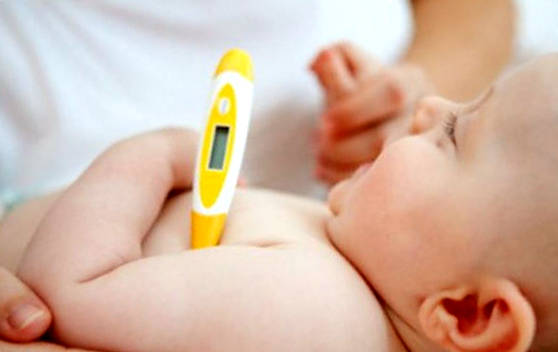
The lack of space for the eruption of new processes leads to the fact that the teeth change the direction of growth, become crooked and unsightly. This phenomenon occurs due to physiological developmental disorders of the child. In such a situation, the baby should be shown to a doctor to prevent the development of unforeseen complications that may be irreversible.
It is important to know! Very often, children tend to have a malocclusion, which is directly due to the lack of free space for the eruption of new teeth.
When visiting the dentist, parents receive disappointing news that their child has an incorrect bite and needs to straighten their teeth. In order not to have to correct complications that take root from an early age, it is necessary to pay attention to the process of the appearance of permanent teeth. The main signs of such a manifestation are the presence of the following symptoms: moodiness, irritability, loss of appetite, poor sleep.
Often, when molars come in, the reaction to this process is the same as when milk shoots appear. It is possible that during the teething process a viral or infectious disease may occur. This is due to the fact that when teeth erupt, immunity decreases, as a result of which the body is attacked by pathogens.
Excessive salivation is the main symptom of the appearance of permanent teeth. If for the first time this symptom has strong signs of salivation, then with molars the process is much smoother. In addition, at an older age, children can wipe their mouths on their own, as well as rinse the mouth. Failure to take these steps will result in irritation on the chin and lips.
It is important to know! Each person's saliva contains a huge amount of bacteria, which, if they come into contact with the skin, can provoke the development of irritations.
As soon as the child’s molars erupt, inflammatory processes occur. Inflammation occurs both on the gums and in the child’s mouth. If during teething there are signs of redness throughout the oral cavity, then this may indicate the attachment of a viral infection. In this case, there will definitely be an increase in body temperature, as a result of which the baby’s well-being will significantly deteriorate. If you have such symptoms, which are complicated by a runny nose and sore throat, you should not put off going to the doctor.
Read also: Signs of teeth in a child
Molars are being cut with signs of slight swelling of the gums. As soon as the first molar erupts, the child quickly begins to pull into his mouth everything that comes to hand. The gums begin to itch very much, so you can reduce the symptoms of itching and pain by chewing special rodents. If there is nothing at hand that can be chewed, then the baby quickly puts its hands into its mouth. Parents should not scold the child for this, but explain that this should not be done. The number of pathogenic microorganisms on the hands is extremely high, even if they are washed with soap, so it is possible that an infectious or bacterial nature may be present.
It is important to know! In some situations, the symptoms of pain are so severe that parents have to resort to the use of anesthetic drugs.
Another important sign of teething in a child is disturbance and restlessness at night. In this case, the baby often wakes up at night, cries, moans or tosses and turns. All these symptoms are normal, so to improve the baby’s well-being, you need to consult a doctor.
How to help your baby teething
Seeing how a child suffers, many parents ask themselves the question: how to help the baby survive this difficult period?
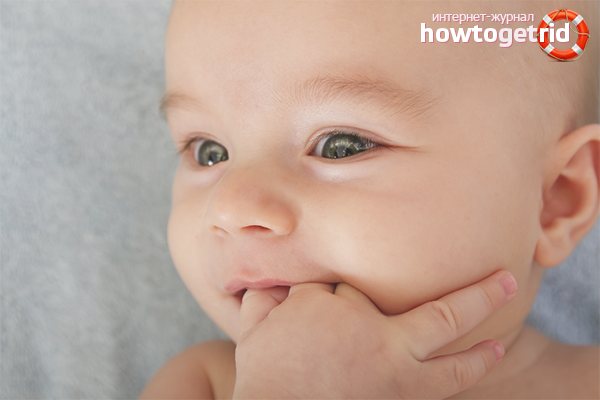
- The child should drink a lot. Drinking plenty of fluids will make it easier for your baby to withstand weakened immunity and the inflammatory process. In addition, a large amount of liquid will help cope with a slight increase in temperature. If your child is breastfed, do not deny your baby breast milk. After all, for him, his mother’s breast is not only a liquid, but also a way to survive physical pain, an opportunity to calm down and hide from all troubles. If the child is bottle-fed, offer him juice and compote with low sugar content.
- You can apply local anesthetic to your gums. These are Kamistad, Kalgel, Holisal, Dentinox and others. Gels and ointments perfectly cool the surface of the mucous membrane, relieve inflammation and redness, and most importantly, relieve aching pain. Local analgesics work for about 3-4 hours, after which you need to apply the baby’s gums again.
- Do not wrap your child up so as not to provoke an additional rise in temperature. The baby should be dressed lightly. If the room is hot, ventilate the room. Remove the child's disposable diaper - it disrupts the heat exchange process.
- You can wipe the child with warm water, especially in the groin and armpits, where the lymph nodes that are responsible for thermoregulation are located. Never wipe your child with vinegar or alcohol. The baby has thin skin, which can absorb toxic substances through capillaries. You can simply poison a child with what you consider to be insignificant rubdowns.
- A bath can help you calm down and relieve your body temperature. The water should be a couple of degrees lower than body temperature to compensate for this increase.
- Give your child special rubber teethers. The baby will chew on them and soothe itchy gums a little. Under no circumstances should you give your child dry goods or a crust of bread. A piece that is bitten off or comes off can cause a child to choke.
- In the children's goods department there are special rubber brushes that fit onto an adult's finger. You can use them to gently but effectively “scratch” your child’s painful gums.
These simple recommendations will help you make the teething process a little easier for your baby.
Temperature during teething is a fairly common occurrence, but all parents are equally worried if the baby becomes hot. Help your child get through this difficult period - hug him, be close, don’t leave him alone with his toys. If the temperature lasts more than three days, if it is above 38 degrees, is accompanied by diarrhea, rash or weakness - do not delay, be sure to show the child to the doctor. If the doctor examines and confirms the “dental” temperature, you can wait for the first tiny teeth with a calm heart. Be attentive and kind to your child, and it will be easier for your baby to survive toothaches.
how to reduce a child's fever with vinegar
Molars and temperature in a child
The temperature during teething often rises to subfebrile and febrile levels. There is debate among doctors about whether temperature fluctuations may indicate an ongoing process. After all, in addition to this, children also experience signs of cough and runny nose. One thing is certain: if the thermometer readings exceed 38.5 degrees, then resorting to the use of antipyretics is mandatory. Many options for children's antipyretics have additional anti-inflammatory and analgesic properties.
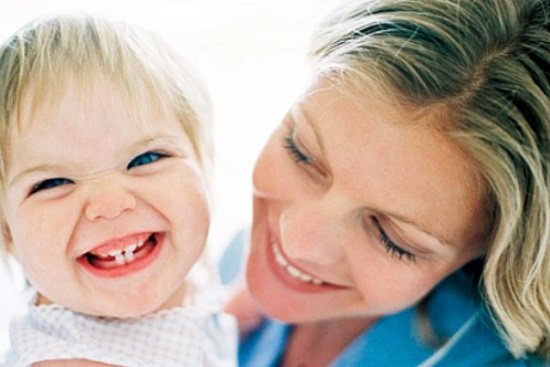
It is important to emphasize that the temperature during teething can last up to 5 days, and in the presence of colds - over 7 days. To find out why your baby’s temperature is constantly rising, resulting in the need to bring it down, you need to consult a doctor.
It is important to know! If a child complains of pain and discomfort in the oral cavity, which indicate the appearance of molars, you need to provide the baby with peace, or better yet, tell him to sleep.

High temperature: causes of occurrence in children
In children under one year old, many even physiological processes are accompanied by fever. But what causes it after a year of teething? The reasons are as follows: - as the tooth grows, biologically active substances are released that promote inflammation; - immunity becomes lower, so some kind of infection can occur and cause fever.
In addition, during teething, fever in children manifests itself as a protective reaction. But then it fluctuates between 37 and 37.5°C. If this norm is exceeded, parents pay attention to the problem and try to somehow solve it. If the fever increases and the readings on the thermometer exceed 38–38.5°C, urgent measures need to be taken, because we are talking about advanced inflammation or the development of an infectious disease.
How long does a baby's temperature last during teething?
As a rule, the inflammatory process is observed for 1-3 days. At this time, children's temperature rises periodically, especially at night. It can be easily reduced with antipyretic drugs. If the situation is more complicated, you should immediately go to the hospital.
Why is high temperature dangerous during teething?
For very young children, when their teeth are growing, high fever is very dangerous. After all, it can lead to convulsions, rapid heartbeat, and breathing problems. This is due to insufficient formation of the central nervous system. And only after five years do convulsions do not occur as a complication of fever.
Parents of those children who have neurological disorders should be especially careful. When teething, they should be given tablets at 37.5 and above.
Features of the order of appearance of teeth
Once the first permanent tooth has erupted, it will be clearly visible. Permanent processes differ from temporary ones in color and shape (milk ones are much smaller and have a yellowish tint). As soon as the baby’s baby teeth begin to fall out, this is a signal that the process of the appearance of permanent teeth will soon begin. The sequence of eruption of permanent processes is determined by the following scheme:
- The molars appear first. The main property of molars is the fact that they are the first to emerge.
- The incisors or central ones appear next.
- Behind them, the incisors or laterals begin to cut.
- After the incisors, premolars or central ones emerge.
- Fangs are caused by one feature: when they erupt, there is excessive pain in the gums.
- Molars.
- Third molars, which may not grow in some children, depending on individual physiological characteristics.
Most often, teething occurs in this order. At the age of 20, wisdom teeth may still emerge. Parents should not panic if their children’s teeth do not come out in the same sequence as described above.
When and how to reduce a child's temperature
If the temperature is low, you should not bring it down. Antipyretics can be given to a child if the temperature rises above 38 degrees. An antipyretic is also indicated for use if the baby has neurological diseases, if he has or has ever had convulsions from high fever. If the child is breathing heavily and frequently, if his arms and legs have become cold, if the baby has become pale and lethargic, you cannot delay taking an antipyretic. Paracetamol or ibuprofen will do their job and a maximum of 15 minutes after administration, the temperature will begin to decrease. Among the drugs we can highlight Ibufen, Panadol, Nurofen, Cinepar, Tsefekon - their range is very extensive.
There are special dosage forms for sale for children in the first year of life. These are syrups, suppositories and tablets that dissolve well in water. Medicines containing ibuprofen not only relieve fever, but also have an analgesic effect. Be sure to read the instructions for the drug to know the dosage for a child of your age. If the baby does not yet know how to drink syrup from a spoon, rectal suppositories are suitable. They act quickly, but only if the baby does not suffer from constipation. If the rectum is filled with feces, the effectiveness of antipyretics is reduced due to the difficulty of absorption of the drug into the mucosal walls.
how to reduce a child's temperature
Features of dental care
To prevent the development of serious complications, it is imperative not only to consult a doctor for help, but also to take proper care of your teeth. Features of care are determined by the following actions:
- Regular visits to the dentist are mandatory. Not only adults, but also children need oral care. If you do not maintain oral hygiene, you may be diagnosed with one of the following ailments: caries, stomatitis, pulpitis, periodontal disease. If there are signs of the development of serious diseases, then treatment must be carried out immediately.
- Brush your teeth regularly. In this case, the correct toothpaste and brush must be selected. You need to brush your teeth correctly and at least 2 times a day.
- The use of fluoride-containing creams, which are prescribed by doctors if necessary.
- Strengthen the immune system. To do this, you need to give the child vitamins, strengthen the child’s body, and teach him to play sports.
- Avoid eating sweets and other types of sugar-containing products. Baby teeth are especially sensitive to sugar, so the process of their destruction will soon be observed.
Read also: Can vomiting occur during teething?
It is impossible to avoid problems with temperature changes during teething in a child, so parents should measure the temperature and, if it rises, reduce it with the help of antipyretics.
What is the reason for the increase in temperature during teething?
During eruption, inflammation occurs in the gums, local immunity decreases, and due to this, a slight increase in temperature occurs. Naturally, the body tries to defend itself; the role of a protector is played by saliva, which has many functions, including anti-inflammatory and bactericidal. This is why babies salivate so much when teething.
It is necessary to pay attention not only to the increase in temperature, but also to the child’s stool. When teething, you may experience loose stools (soft paste of the usual color, somewhat more often than usual), but not diarrhea.
